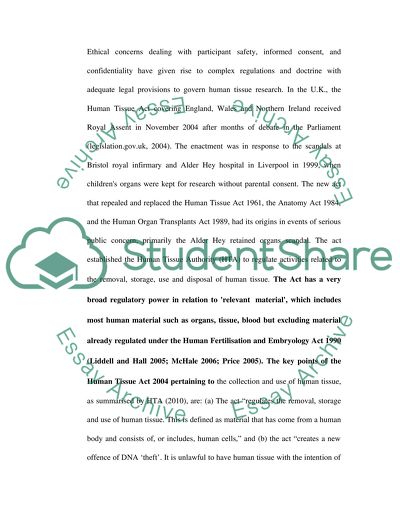Cite this document
(“Use of human tissue for research Essay Example | Topics and Well Written Essays - 1750 words”, n.d.)
Retrieved from https://studentshare.org/health-sciences-medicine/1420505-use-of-human-tissue-for-research
Retrieved from https://studentshare.org/health-sciences-medicine/1420505-use-of-human-tissue-for-research
(Use of Human Tissue for Research Essay Example | Topics and Well Written Essays - 1750 Words)
https://studentshare.org/health-sciences-medicine/1420505-use-of-human-tissue-for-research.
https://studentshare.org/health-sciences-medicine/1420505-use-of-human-tissue-for-research.
“Use of Human Tissue for Research Essay Example | Topics and Well Written Essays - 1750 Words”, n.d. https://studentshare.org/health-sciences-medicine/1420505-use-of-human-tissue-for-research.


